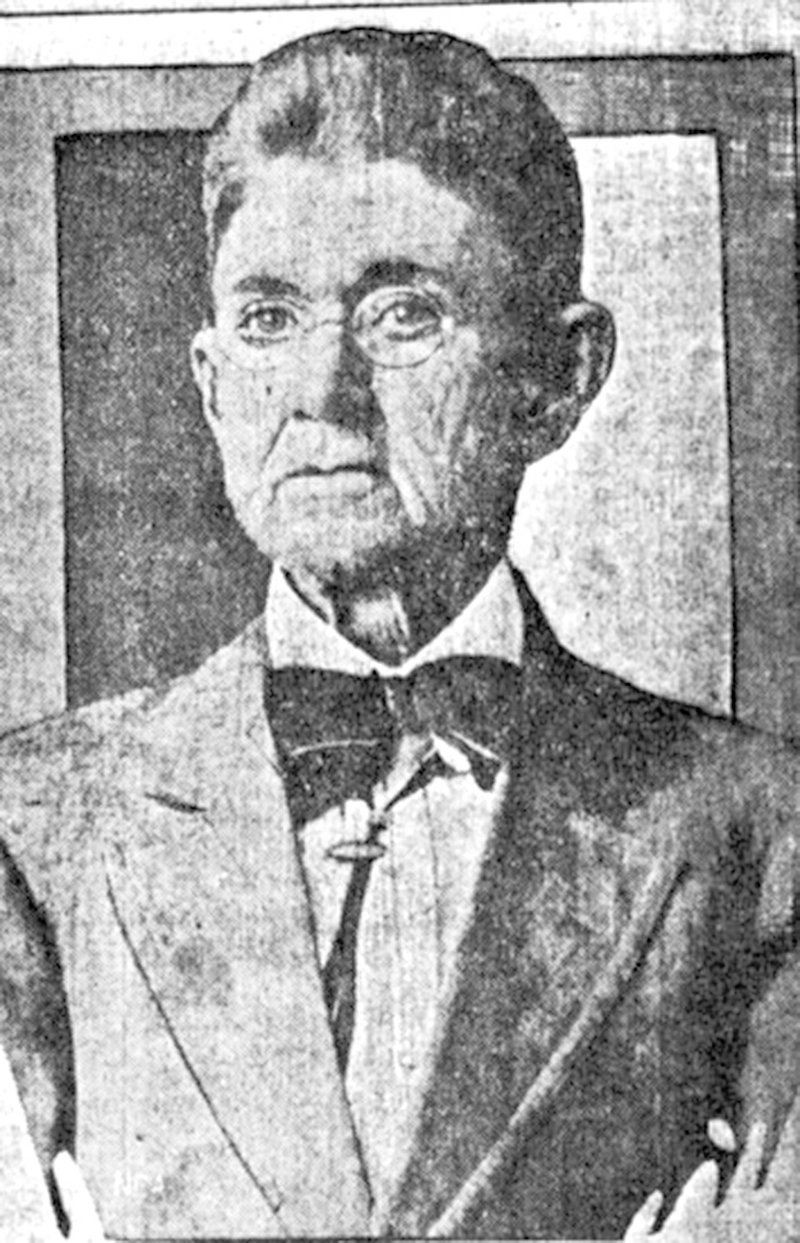GENTRY -- Numerous physicians have practiced in Gentry since its founding in 1894, but perhaps none were quite as unusual as Dr. M. Victor Mayfield, who spent time here (and in Sulphur Springs and Siloam Springs) in the early 1900s, probably shortly before 1915, though one source puts him here in the 1920s.
Dr. Mayfield became known as a "cancer doctor" and marketed a special medicine which some claimed produced miraculous cures.
The doctor had a small build, was always neat and trim, always wore polished shoes and never had to shave. He is reported to have smoked strong pipes, used strong language and was agreeable to the cafe girls and the widows. When questioned about his not needing to shave, the doctor said he had used an "old Indian remedy" which stopped the growth of facial hair and took away the lifelong chore of shaving.
Not much is recorded about Mayfield's days in Gentry, except that he was accustomed to sitting around and talking with the menfolk in town and seemed to be well liked. A discovery made in Mena, where he reportedly took up residence around 1915, sent shock waves back to Gentry and around the country.
It seems Dr. Mayfield practiced there for about 10 years, treating his patients in rented rooms on Main Street. He was occasionally visited there by an adopted son, Henry Philpot, from Iowa.
In January 1926, the 79-year-old doctor became very sick; and another town doctor, Dr. W.C. Vandiver, was called upon to treat the ailing Mayfield. He determined that the first thing Mayfield needed was a bath; and with the assistance of another person, Dr. Vandiver undressed Mayfield while the hot bath water was prepared. He made a startling discovery: Dr. Victor Mayfield was a woman!
The news of Dr. Vandiver's discovery spread like wildfire. Not only did the news spread through Mena, where Mayfield had practiced medicine for about 10 years, deceiving all, the news spread across the nation.
Judge Mark P. Olney, using an address book found in Mayfield's belongings, sent letters, 25 of them, to different parts of the country where Mayfield had apparently practiced her masquerade in the years before coming to Mena. Newspapers from around the country became interested in the story, with some sending photographers to try to get a photo of the Dr. Victor Mayfield who turned out to be a Victoria.
The St. Louis Post-Dispatch sent F.A. Behymer, a photographer, to get a picture of the doctor. Mayfield charged him a $10 fee to pose for a photograph and used the money to pay the woman who cared for her and nursed her back to health after her true gender had been uncovered.
When letters arrived in Mena, it was learned that Mayfield had been in Iowa and Missouri before coming to northwest Arkansas. She had even married in Missouri, in 1913; but the marriage only lasted until Mayfield's wife discovered some things about the doctor. Mayfield had lived in Iowa in the 1890s, staying with a wealthy woman there but never marrying. Mayfield was said to have married another woman in Ohio, but then disappeared from sight.
Mayfield was reported to have been thrown into a Wisconsin jail for indebtedness in 1900. The jail burned and it was thought that Mayfield had perished with the other inmates. The revelation in Mena revealed that Mayfield must have escaped during the fire.
Mayfield's only explanation regarding her masquerade as a man was that her parents, who were English, had to raise her as a son to protect their property rights. Her father had been a doctor in England and had left her the cancer formula. Others theorized that she masqueraded as a man in order to practice medicine. Whether Mayfield's explanation was true, she offered no other reason and simply said she didn't recall when confronted with information about her from other parts of the country.
When her health returned, she left Mena and went to David City, Neb., but wrote letters to friends in Mena, thanking them for their kindness. After a few months, she returned to Arkansas, first to Hot Springs and then back to Mena, where she was poor and was helped out for a time by friends. She became a ward of the county and lived on the county farm at Rust. She died at the age of 82.
According to a 1986 article in The Mena Star, by Harold Coogan, "Her last wishes were carried out. She was dressed in men's clothing and a woman preacher, Miss Fannie Vise, conducted the (funeral) service. Her burial was at the Gann Cemetery, not far from the county farm where she had spent the last years of her life. The last notes on her burial records state: 'Dr. M.V. Mayfield went disguised as a man, got by with it for 40 years. Born in England, was a good doctor. Died at the county farm.'"
Her grave is unmarked.
[Sources for this article are: "When He Was a She: The Story of Dr. M. Victor Mayfield or Mena's Victor/ Victoria," housed at the University of Arkansas Library, in the Gingles and Westbrook Contest Entries, Manuscript Collection 757, Box 1. 1986, Number 14; "The Story of Dr. M. Victor Mayfield:When He was a She," by Harold Coogan, published in The Mena Star, Jan. 19, 1986, and submitted for the Lucille Westbrook Local History Award, provided by courtesy of the University of Arkansas Libraries Special Collections, Fayetteville; and an online article by former Gentry resident Lacey Schowalter, entitled "Former Gentry doctor was a woman posing to be a man."]
General News on 04/30/2014
